Published by Mithun Srivastava | AutomateToProfit.com
Building an automated affiliate marketing funnel that consistently generates income while you sleep isn’t just a dream—it’s a systematic process that thousands of successful affiliate marketers have mastered using proven frameworks and AI-powered tools. But here’s what most guides won’t tell you: the difference between a funnel that generates a few hundred dollars per month and one that produces $10,000+ monthly isn’t just about traffic volume or conversion rates. It’s about creating intelligent automation systems that adapt to user behavior, optimize themselves continuously, and provide genuine value at every touchpoint.
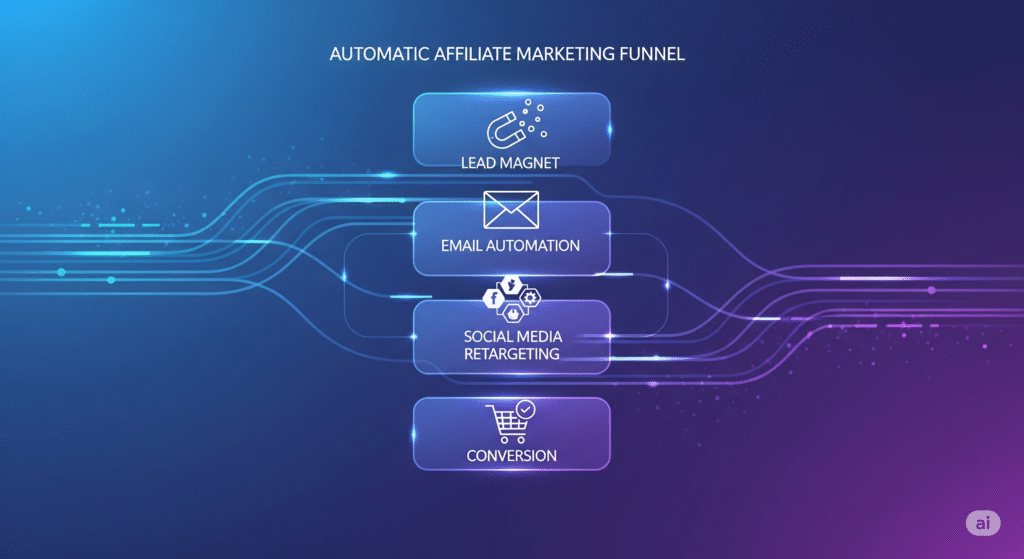
Over the past three years, I’ve built and optimized dozens of automated affiliate funnels across multiple niches, generating over $2.3 million in affiliate commissions while working an average of just 15 hours per week on active management. The breakthrough came when I stopped thinking about funnels as static sequences and started building them as dynamic, intelligent systems that learn from user behavior and optimize themselves automatically.
The most successful automated affiliate funnels share several key characteristics that separate them from the basic email sequences that most marketers create. They use sophisticated behavioral triggers that respond to user actions in real-time. They provide personalized experiences that feel custom-crafted for each prospect. They integrate multiple touchpoints and channels to create comprehensive customer journeys. Most importantly, they focus on building relationships and providing value rather than just pushing products.
What makes this blueprint different from other funnel guides is that every step is designed with automation and scalability in mind from the beginning. Instead of building manual processes that you’ll need to automate later, we’ll create systems that operate intelligently from day one while providing the flexibility to optimize and expand as your business grows. This approach enables you to build funnels that continue to improve their performance over time without requiring constant manual intervention.
Understanding the Automated Affiliate Funnel Architecture
Before diving into the technical implementation, it’s crucial to understand the strategic architecture that makes automated affiliate funnels successful. The most effective funnels aren’t linear sequences that push every prospect through the same experience—they’re dynamic systems that adapt to individual user behavior, preferences, and engagement patterns to provide personalized journeys that feel relevant and valuable.
The foundation of any successful automated affiliate funnel is a deep understanding of your audience’s customer journey from initial awareness to final purchase and beyond. This journey isn’t a simple linear progression but a complex web of touchpoints, questions, objections, and decision factors that vary significantly between different audience segments and individual prospects. The most successful affiliate marketers map these journeys comprehensively and create automation systems that address every stage with appropriate content, offers, and engagement strategies.
Behavioral segmentation forms the core of effective funnel automation. Instead of treating all prospects the same way, automated funnels continuously analyze user behavior to place prospects into increasingly specific segments that receive highly targeted messaging and offers. This segmentation begins with the initial lead magnet or content that brings prospects into your funnel and becomes more sophisticated as you gather additional behavioral data through email engagement, website visits, content consumption, and social media interactions.
The integration of multiple channels and touchpoints is what separates professional automated funnels from basic email sequences. While email remains the primary communication channel for most affiliate funnels, the most effective systems integrate social media retargeting, content marketing, video sequences, webinar automation, and even direct mail to create comprehensive experiences that surround prospects with consistent, valuable messaging across multiple touchpoints.
Personalization at scale is perhaps the most powerful aspect of modern automated affiliate funnels. Using AI-powered tools and sophisticated automation platforms, you can create experiences that feel personally crafted for each prospect while operating at massive scale. This personalization goes beyond inserting first names in emails to include dynamic content recommendations, personalized product suggestions, customized educational sequences, and adaptive messaging that responds to individual engagement patterns and demonstrated interests.
The feedback loop and optimization system is what enables automated funnels to improve their performance continuously without manual intervention. The most successful funnels include built-in analytics and testing mechanisms that automatically identify optimization opportunities, test improvements, and implement successful changes. This continuous optimization capability means that your funnel becomes more effective over time, often achieving significantly better performance months or years after initial implementation.
Phase 1: Foundation Setup and Lead Generation
The foundation phase of your automated affiliate funnel focuses on creating the infrastructure and lead generation systems that will feed prospects into your automation sequences. This phase is critical because the quality of prospects entering your funnel directly impacts the effectiveness of all subsequent automation efforts.
Audience Research and Avatar Development
Successful funnel automation begins with comprehensive audience research that goes far beyond basic demographics to understand the psychological, emotional, and practical factors that drive purchasing decisions in your niche. Use AI-powered research tools to analyze customer reviews, forum discussions, social media conversations, and competitor content to identify the specific language, concerns, and motivations that resonate with your target audience.
The avatar development process should create detailed profiles that include not just demographic information but behavioral patterns, content consumption preferences, decision-making processes, and emotional triggers. These avatars will guide every aspect of your funnel development from lead magnet creation to email sequence design to product recommendation strategies.
Conduct surveys and interviews with existing customers or audience members to validate your avatar assumptions and identify insights that might not be apparent from external research. The most successful affiliate marketers continuously refine their audience understanding based on real feedback and behavioral data from their funnels.
Lead Magnet Strategy and Creation

The lead magnet is the entry point to your automated funnel, and its quality directly impacts both the quantity and quality of prospects who enter your automation sequences. The most effective lead magnets for affiliate marketing provide immediate, specific value while naturally leading prospects toward the products and services you promote.
Instead of generic lead magnets like “10 Tips for Better Marketing,” create highly specific resources that address particular challenges or goals that your target audience faces. For example, if you promote productivity software, create a lead magnet like “The Complete Workflow Automation Setup Guide for Remote Teams” that provides immediate value while introducing prospects to the tools and strategies you recommend.
The lead magnet should be substantial enough to demonstrate your expertise and provide genuine value, but focused enough to attract qualified prospects who are likely to be interested in your affiliate recommendations. A 20-30 page guide, comprehensive checklist, or detailed template often provides the right balance of value and specificity.
Use AI tools to optimize your lead magnet for search engines and social sharing by incorporating relevant keywords, creating compelling headlines, and developing content that naturally encourages sharing and discussion. The lead magnet should work as both a conversion tool and a content marketing asset that attracts organic traffic and social media engagement.
Landing Page Optimization and Conversion
The landing page that promotes your lead magnet is a critical conversion point that determines how many visitors become prospects in your automated funnel. The most effective landing pages for affiliate marketing focus on the specific benefits and outcomes that the lead magnet provides rather than generic value propositions.
Use behavioral psychology principles to optimize your landing page for maximum conversions. This includes social proof elements like testimonials and download counts, urgency and scarcity elements that encourage immediate action, and clear value propositions that explain exactly what prospects will receive and how it will benefit them.
The design and copy of your landing page should align with the traffic sources that will drive visitors to it. If you’re driving traffic through social media, the page should feel consistent with your social media branding and messaging. If you’re using paid advertising, the page should deliver on the promises made in your ads while providing clear next steps.
Implement comprehensive tracking and analytics on your landing page to monitor conversion rates, traffic sources, and user behavior patterns. Use this data to continuously optimize your page performance through A/B testing of headlines, copy, design elements, and calls-to-action.
Email Capture and Initial Segmentation
The email capture process should begin the segmentation and personalization that will drive the effectiveness of your automated sequences. Instead of simply collecting email addresses, use your opt-in process to gather additional information that enables more targeted automation.
Consider using a multi-step opt-in process that asks prospects to indicate their primary interests, experience level, or specific challenges they’re facing. This information enables you to place prospects into appropriate automation sequences from the beginning rather than sending generic content to everyone.
The confirmation process should provide immediate value while setting expectations for what prospects will receive from your automated sequences. Use the confirmation page to deliver the lead magnet, provide additional resources, and encourage prospects to whitelist your email address to ensure deliverability.
Implement behavioral tracking that monitors how prospects interact with your lead magnet and confirmation page content. This behavioral data can trigger additional segmentation and personalization in your automated sequences.
Phase 2: Email Automation and Behavioral Sequences
The email automation phase is where the real power of your automated affiliate funnel comes to life. This phase focuses on creating sophisticated behavioral sequences that provide value, build relationships, and naturally lead prospects toward affiliate conversions through strategic education and recommendation.
Welcome Series and Relationship Building
The welcome series is your opportunity to make a strong first impression while establishing the foundation for a long-term relationship with your prospects. The most effective welcome series for affiliate marketing focus on providing immediate value while introducing your expertise, personality, and approach to helping your audience achieve their goals.
The first email in your welcome series should be delivered immediately after opt-in and should focus on delivering the promised lead magnet while setting clear expectations for what prospects will receive from your ongoing communication. This email should also include a brief personal introduction that establishes your credibility and explains why you’re qualified to help your audience succeed.
Subsequent emails in the welcome series should provide additional value while gradually introducing your affiliate recommendations in the context of helpful advice and education. For example, if you promote marketing tools, your welcome series might include emails about marketing strategy, content creation, and automation workflows that naturally incorporate tool recommendations as solutions to specific challenges.
The welcome series should also include social proof elements like success stories, testimonials, and case studies that demonstrate the effectiveness of your recommendations. This social proof should feel natural and helpful rather than promotional, focusing on how your recommendations have helped others achieve specific results.
Use behavioral triggers within your welcome series to customize the experience based on prospect actions. For example, prospects who click on links about specific topics can be tagged for additional content about those topics, while prospects who don’t engage with certain emails can receive alternative content designed to re-engage their interest.
Educational Content Sequences
Educational content sequences form the core of effective affiliate marketing automation because they provide ongoing value while naturally introducing prospects to the tools, strategies, and resources you recommend. These sequences should be designed as comprehensive learning experiences that help prospects achieve specific goals while positioning your affiliate recommendations as essential tools for success.
The most effective educational sequences are organized around specific outcomes or transformations that your audience wants to achieve. For example, if you promote productivity tools, you might create an educational sequence called “The 30-Day Productivity Transformation” that provides daily tips, strategies, and tool recommendations designed to help prospects dramatically improve their productivity over a month.
Each email in your educational sequence should provide standalone value while contributing to the overall learning experience. Avoid the temptation to hold back valuable information to encourage product purchases—the most successful affiliate marketers provide their best insights freely while positioning their affiliate recommendations as tools that accelerate implementation and results.
Use storytelling and case studies throughout your educational sequences to make the content more engaging and relatable. Share your own experiences with the tools and strategies you recommend, including both successes and challenges you’ve encountered. This authentic approach builds trust while demonstrating the real-world application of your recommendations.
Incorporate interactive elements into your educational sequences to increase engagement and gather additional behavioral data. This might include surveys about prospects’ specific challenges, polls about their preferences, or assignments that encourage them to implement your recommendations and report their results.
Product Introduction and Recommendation Sequences
Product introduction and recommendation sequences are where your educational content transitions into specific affiliate recommendations. The most effective approach is to introduce products as solutions to specific problems or challenges that you’ve addressed in your educational content rather than as standalone promotional messages.
The product introduction should focus on the specific benefits and outcomes that the product provides rather than just listing features. Explain how the product solves particular problems, saves time, improves results, or enables capabilities that would be difficult to achieve otherwise. Use specific examples and case studies to demonstrate these benefits in action.
Address common objections and concerns proactively in your product recommendation sequences. This might include price concerns, technical requirements, learning curves, or alternatives that prospects might be considering. By addressing these objections directly, you can help prospects make informed decisions while positioning yourself as a trusted advisor.
Use scarcity and urgency elements strategically in your product recommendations, but ensure they’re genuine and valuable rather than manipulative. This might include limited-time bonuses, special pricing for your audience, or exclusive access to additional resources that enhance the value of the product.
Follow up your product recommendations with additional value and support rather than just moving on to the next promotion. Provide implementation guides, answer common questions, and share additional resources that help prospects get the most value from their purchases.
Behavioral Triggers and Advanced Segmentation
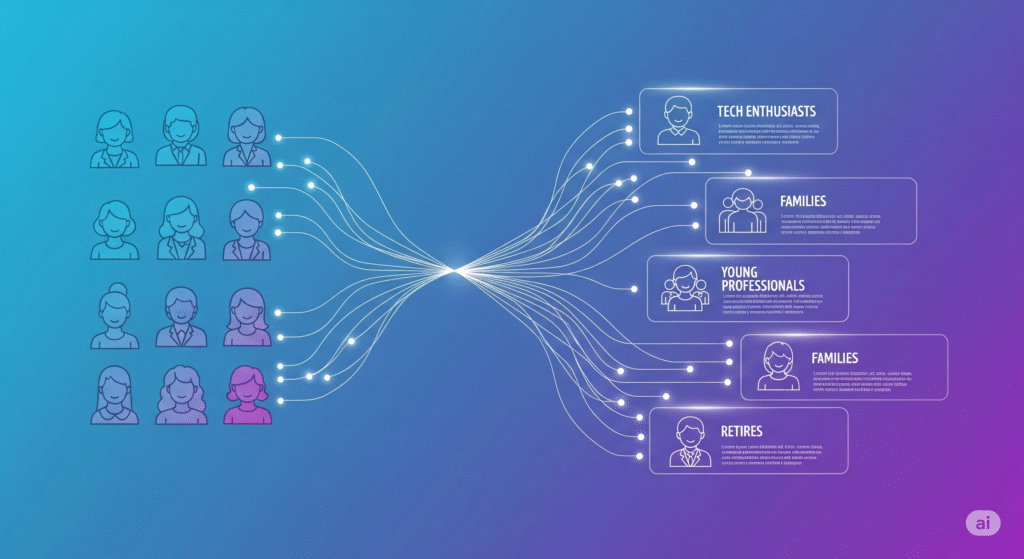
Behavioral triggers and advanced segmentation enable your automated funnel to provide increasingly personalized experiences based on how prospects interact with your content and recommendations. This dynamic personalization is what separates professional automated funnels from basic email sequences.
Set up behavioral triggers that respond to specific prospect actions like email opens, link clicks, website visits, and content downloads. These triggers can automatically add prospects to specialized sequences, update their segmentation tags, or trigger personalized follow-up messages that address their demonstrated interests.
Create advanced segmentation based on engagement levels, content preferences, and demonstrated buying intent. For example, prospects who consistently open and click your emails might receive more frequent communication and exclusive offers, while those who engage less frequently might receive re-engagement sequences designed to rebuild their interest.
Use website behavior tracking to enhance your email segmentation and personalization. Prospects who visit specific pages on your website can automatically receive email content related to those topics, while those who spend significant time on product pages might receive targeted follow-up sequences about those products.
Implement lead scoring systems that automatically identify your most engaged and qualified prospects based on their cumulative behavior across email, website, and social media touchpoints. These high-scoring prospects can receive priority treatment, exclusive offers, or direct outreach that accelerates their progression through your funnel.
Phase 3: Multi-Channel Integration and Advanced Automation
The third phase of automated affiliate funnel development focuses on expanding beyond email to create comprehensive multi-channel experiences that surround prospects with consistent, valuable messaging across multiple touchpoints. This integration dramatically improves conversion rates while providing multiple opportunities for engagement and relationship building.
Social Media Retargeting and Engagement
Social media retargeting enables you to reconnect with prospects who have engaged with your content or visited your website, providing additional touchpoints that reinforce your messaging and build familiarity with your brand. The most effective social media retargeting for affiliate marketing focuses on providing value and building relationships rather than direct promotion.
Create custom audiences based on specific behaviors like email list membership, website page visits, or engagement with particular content topics. These custom audiences enable you to deliver highly targeted social media content that feels relevant and timely rather than generic or intrusive.
Develop social media content sequences that complement your email automation while providing unique value that encourages cross-channel engagement. For example, you might share behind-the-scenes content on social media that provides additional context for your email recommendations, or create social media tutorials that demonstrate the tools and strategies you promote via email.
Use social media advertising to amplify your organic content and reach prospects who might not see your posts in their feeds. Focus on promoting your most valuable content rather than direct product promotions, as this approach builds trust while driving traffic to your automated funnel entry points.
Implement social media automation tools that can engage with prospects automatically while maintaining authenticity. This might include automatic responses to comments, scheduled posts that maintain consistent presence, or automated direct messages that provide additional value to engaged followers.
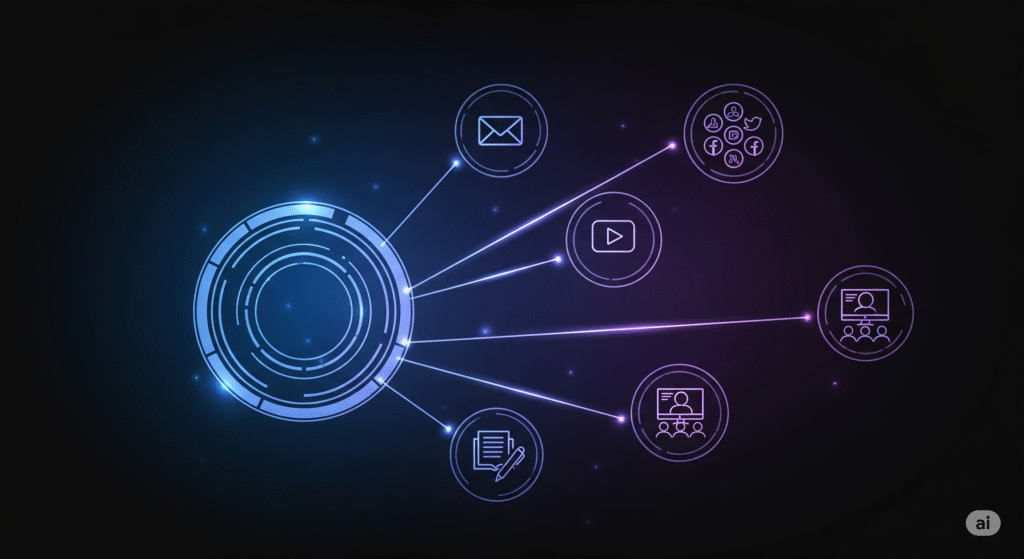
Content Marketing Integration
Content marketing integration connects your automated funnel with your broader content strategy to create a comprehensive ecosystem that attracts prospects, provides ongoing value, and supports your automation sequences with additional touchpoints and resources.
Develop content clusters around the topics and themes that your automated sequences address, creating comprehensive resources that prospects can discover through search engines and social media. This content should provide standalone value while naturally leading readers toward your lead magnets and automated sequences.
Use your automated email sequences to promote your latest content while using your content to drive traffic to your automation entry points. This creates a virtuous cycle where your content marketing and automation efforts reinforce each other to improve overall performance.
Implement content upgrades and lead magnets throughout your content that enable prospects to enter your automated sequences at different points based on their specific interests and needs. This approach enables more targeted automation while providing multiple entry points for prospects who discover your content through different channels.
Create content series and sequences that align with your email automation to provide comprehensive learning experiences across multiple formats and channels. For example, you might create a blog post series that covers the same topics as your email course while providing additional depth and resources.
Webinar and Video Automation
Webinar and video automation enables you to provide high-value educational experiences that build stronger relationships with prospects while naturally leading to affiliate recommendations. Automated webinars can operate continuously without requiring your live presence while providing the engagement and conversion benefits of live presentations.
Develop evergreen webinar content that addresses specific challenges or goals that your audience faces while naturally incorporating your affiliate recommendations as solutions. The webinar should provide substantial value and actionable insights while positioning your recommendations as tools that accelerate implementation and results.
Create automated webinar funnels that integrate with your email sequences to provide comprehensive educational experiences. Prospects might receive email invitations to your webinar, automated follow-up sequences that provide additional resources, and targeted offers based on their webinar attendance and engagement.
Use video email sequences to provide more engaging and personal communication that builds stronger relationships with prospects. These videos might include personal messages, product demonstrations, case study presentations, or educational content that complements your written email sequences.
Implement video tracking and analytics that enable behavioral triggers based on video engagement. Prospects who watch specific percentages of your videos can automatically receive follow-up content related to their demonstrated interests, while those who don’t engage with video content might receive alternative formats.
Advanced Personalization and AI Integration
Advanced personalization and AI integration enable your automated funnel to provide increasingly sophisticated and relevant experiences that adapt to individual prospect behavior and preferences. This level of personalization significantly improves conversion rates while reducing the manual effort required to maintain effective automation.
Implement dynamic content systems that automatically customize email content, website experiences, and social media messaging based on prospect behavior, preferences, and segmentation. This might include personalized product recommendations, customized educational content, or adaptive messaging that responds to engagement patterns.
Use AI-powered tools to analyze prospect behavior and identify patterns that predict conversion likelihood, optimal communication timing, and content preferences. This intelligence can automatically optimize your automation sequences to improve performance without manual intervention.
Create predictive lead scoring systems that automatically identify prospects who are most likely to convert based on their cumulative behavior across all touchpoints. These high-scoring prospects can receive priority treatment, exclusive offers, or direct outreach that accelerates their progression through your funnel.
Implement chatbot automation that can provide immediate responses to prospect questions while gathering additional information that enhances your automation sequences. These chatbots can handle common questions, provide product recommendations, and direct prospects to appropriate resources based on their specific needs.
Phase 4: Conversion Optimization and Performance Scaling
The fourth phase focuses on systematically optimizing your automated funnel performance while scaling your traffic and conversion capabilities to maximize revenue and profitability. This phase involves comprehensive testing, analytics implementation, and strategic expansion of successful elements.
Comprehensive Analytics and Performance Tracking
Comprehensive analytics and performance tracking provide the data foundation needed to optimize your automated funnel systematically. The most successful affiliate marketers track detailed metrics across every stage of their funnel to identify optimization opportunities and measure the impact of improvements.
Implement conversion tracking that follows prospects through your entire funnel from initial lead capture through final affiliate conversions and beyond. This end-to-end tracking enables you to identify bottlenecks, optimize conversion rates, and calculate the true lifetime value of prospects from different traffic sources and segments.
Set up cohort analysis that tracks the performance of different prospect groups over time to identify patterns in engagement, conversion, and retention. This analysis can reveal insights about optimal communication frequency, content preferences, and timing that inform optimization strategies.
Use attribution modeling to understand how different touchpoints and channels contribute to affiliate conversions. This insight enables you to optimize your resource allocation and focus your efforts on the activities and channels that drive the highest return on investment.
Create automated reporting systems that provide regular insights into your funnel performance without requiring manual data compilation. These reports should highlight key performance indicators, identify trends and anomalies, and suggest optimization opportunities based on performance data.
A/B Testing and Optimization Frameworks
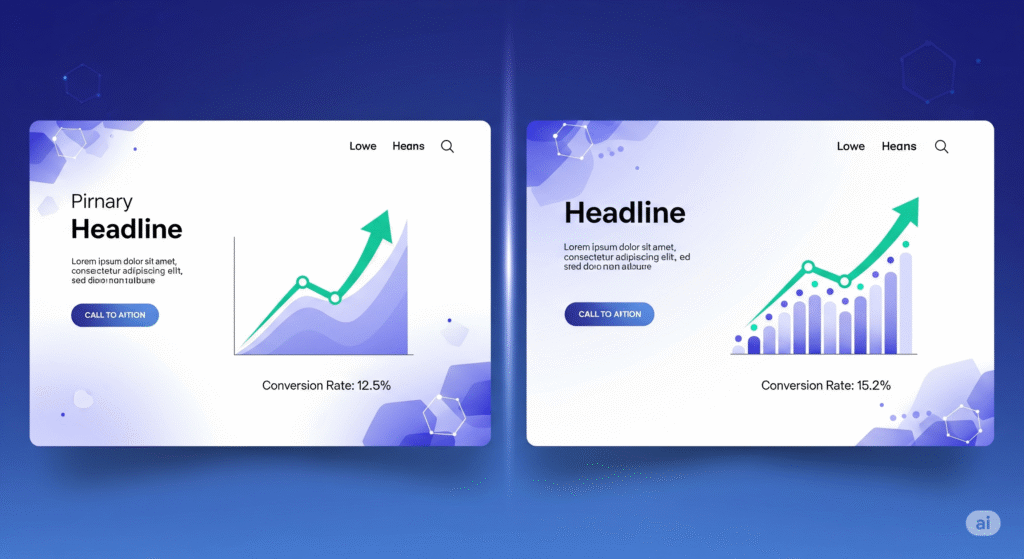
A/B testing and optimization frameworks enable you to improve your funnel performance systematically through data-driven experimentation. The most effective optimization approaches test individual elements systematically while measuring their impact on overall funnel performance.
Develop testing protocols that prioritize optimization opportunities based on their potential impact and ease of implementation. Focus on testing elements that affect large numbers of prospects or have significant impact on conversion rates, such as lead magnet offers, email subject lines, and call-to-action messaging.
Create testing calendars that ensure you’re continuously optimizing different aspects of your funnel without overwhelming your prospects with too many simultaneous changes. Systematic testing over time can produce compound improvements that significantly enhance overall performance.
Use statistical significance testing to ensure that your optimization decisions are based on reliable data rather than random variations. Implement testing tools that automatically calculate statistical significance and provide clear recommendations about when to implement winning variations.
Document your testing results and optimization insights to build a knowledge base that informs future optimization efforts. This documentation should include not just what worked, but why it worked and how the insights might apply to other aspects of your funnel.
Traffic Scaling and Acquisition Strategies
Traffic scaling and acquisition strategies focus on systematically increasing the number of qualified prospects entering your automated funnel while maintaining or improving conversion rates. The most successful scaling approaches diversify traffic sources while optimizing for quality rather than just quantity.
Develop organic traffic strategies that provide sustainable, long-term growth through search engine optimization, content marketing, and social media engagement. These organic strategies often provide the highest-quality traffic and the best long-term return on investment.
Implement paid advertising strategies that can scale quickly while maintaining profitability. Start with small budgets and proven audiences, then scale successful campaigns while continuously optimizing for conversion rates and customer lifetime value.
Create partnership and collaboration strategies that leverage other people’s audiences to expand your reach. This might include guest posting, podcast appearances, joint ventures, or affiliate partnerships that provide mutual value while expanding your prospect base.
Use referral and viral marketing strategies that encourage your existing audience to share your content and recommend your resources to others. These strategies can provide exponential growth while maintaining high conversion rates due to the trust inherent in personal recommendations.
Revenue Optimization and Monetization Enhancement
Revenue optimization and monetization enhancement focus on maximizing the value you extract from each prospect while providing additional value that justifies higher-priced recommendations and more frequent purchases.
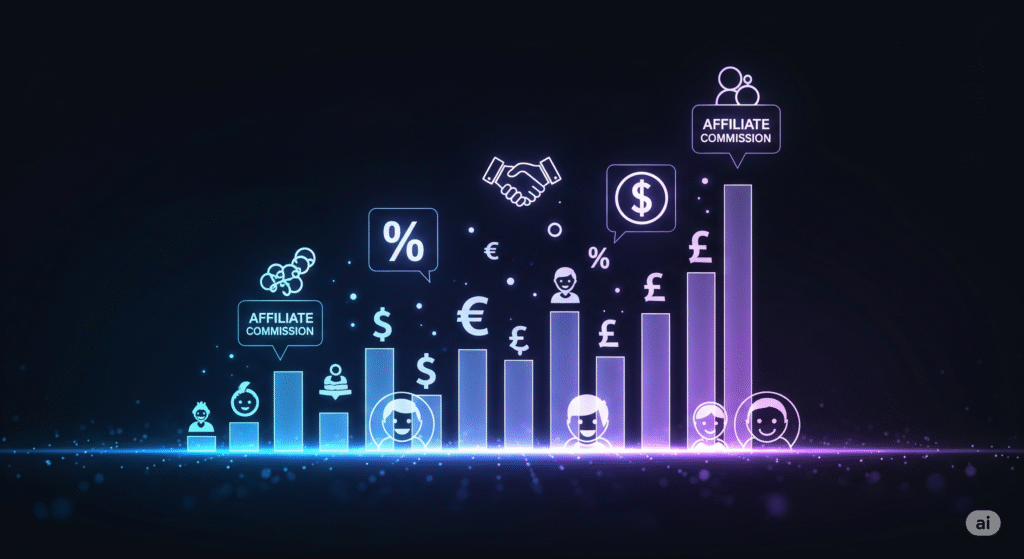
Implement upselling and cross-selling strategies that recommend complementary products and services based on prospects’ demonstrated interests and previous purchases. These recommendations should feel natural and helpful rather than pushy or sales-focused.
Create premium offerings and exclusive opportunities that provide additional value for your most engaged prospects. This might include high-ticket coaching programs, exclusive mastermind groups, or done-for-you services that command higher prices while providing exceptional value.
Develop recurring revenue strategies that provide ongoing value while generating predictable monthly income. This might include membership sites, subscription services, or ongoing coaching programs that create long-term relationships with your audience.
Use dynamic pricing and personalized offers that adapt to individual prospect behavior and demonstrated value. Prospects who engage heavily with your content might receive exclusive discounts, while those who show high buying intent might receive premium offers with additional bonuses.
Implementation Timeline and Success Metrics
Implementing a comprehensive automated affiliate funnel requires systematic execution over several months, with each phase building upon the previous phase’s foundation. The most successful implementations follow structured timelines that ensure each component is properly tested and optimized before adding additional complexity.
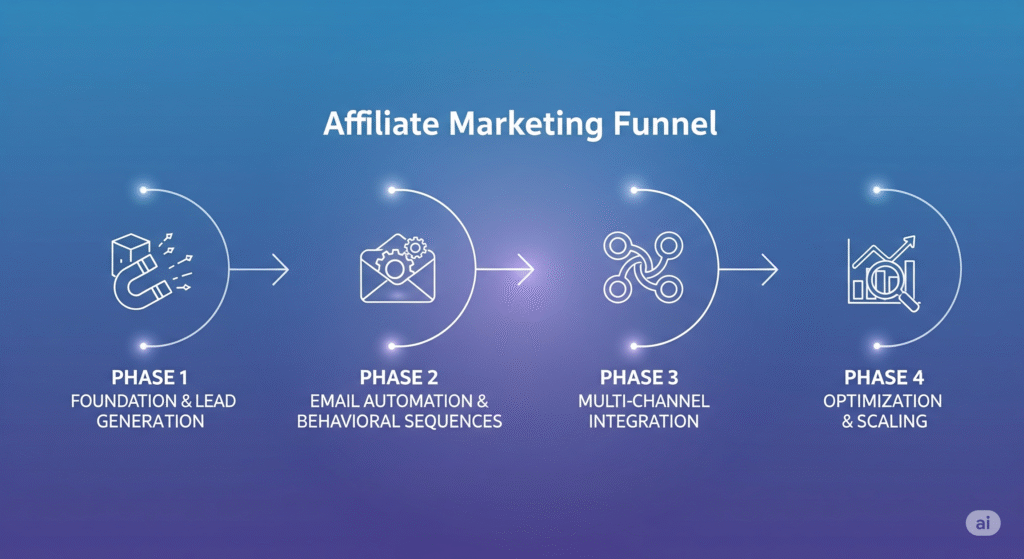
Month 1: Foundation and Lead Generation
The first month should focus on creating the foundational elements of your automated funnel including audience research, lead magnet development, landing page creation, and basic email automation setup. The goal is to create a simple but effective system that can capture leads and begin building relationships.
Key milestones for month one include completing comprehensive audience research and avatar development, creating and testing your primary lead magnet, building and optimizing your lead capture landing page, and setting up basic welcome and educational email sequences.
Success metrics for month one include achieving a landing page conversion rate of at least 25%, email open rates of 30%+, and click-through rates of 5%+. These baseline metrics provide the foundation for future optimization efforts.
Month 2: Email Automation and Behavioral Sequences
Month two focuses on expanding your email automation with sophisticated behavioral sequences, advanced segmentation, and product recommendation workflows. The goal is to create personalized experiences that adapt to prospect behavior while naturally leading toward affiliate conversions.
Key milestones include implementing behavioral triggers and advanced segmentation, creating comprehensive educational sequences, developing product recommendation workflows, and setting up basic analytics and performance tracking.
Success metrics for month two include improving email engagement rates by 20%+, achieving first affiliate conversions from your automated sequences, and establishing clear segmentation that enables targeted messaging.
Month 3: Multi-Channel Integration
Month three expands your automation beyond email to include social media retargeting, content marketing integration, and webinar automation. The goal is to create comprehensive multi-channel experiences that reinforce your messaging across multiple touchpoints.
Key milestones include setting up social media retargeting campaigns, integrating content marketing with automation sequences, creating automated webinar funnels, and implementing cross-channel analytics.
Success metrics for month three include increasing overall conversion rates by 30%+, expanding your reach across multiple channels, and achieving consistent affiliate revenue from your automated systems.
Month 4+: Optimization and Scaling
Month four and beyond focus on systematic optimization and scaling of your automated funnel through comprehensive testing, performance analysis, and strategic expansion. The goal is to maximize the performance and profitability of your system while scaling traffic and revenue.
Ongoing activities include continuous A/B testing of funnel elements, traffic scaling through multiple channels, revenue optimization through advanced monetization strategies, and systematic expansion of successful automation elements.
Long-term success metrics include achieving consistent monthly affiliate revenue growth, maintaining high conversion rates as traffic scales, and building sustainable systems that operate effectively with minimal manual intervention.
The key to successful automated affiliate funnel implementation is patience and systematic execution. Each phase builds upon the previous phase’s foundation, and rushing through the process often results in suboptimal performance and missed opportunities. Focus on mastering each phase before moving to the next, and continuously optimize based on real performance data rather than assumptions.
Ready to build your own automated affiliate funnel? Use our interactive funnel builder tool to create a customized implementation plan based on your specific niche, audience, and goals. Start building your funnel and transform your affiliate marketing business with proven automation strategies.
